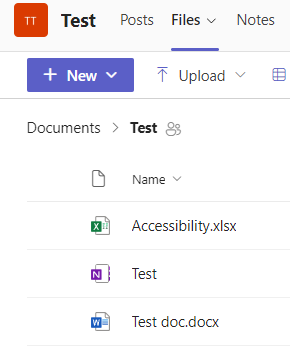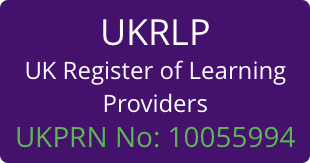
Have you ever found you have less and less time during your normal working day? Or perhaps you’re finding that you seem to have more to do today than yesterday? Let’s look through a small selection of Microsoft shortcuts as well as useful hints and tips that may make your working life a bit easier.
Some of the issues I hear from the people I train include inheriting Excel Spreadsheets with a function that they don’t know how to change or when the formatting in a Word document is disjointed.
Many people find a way to overcome any issues but this can take a lot of time. Particularly if they are unaware of the shortcuts or best practice methods that really help to save those minutes, hours or even days! Then there’s the frustration which can be a combination of not knowing how to perform a task or correcting someone else’s badly-formatted document.
It’s okay, AI will sort it all out!
Perhaps AI is making our lives a little easier with Chat GPT and the ability to use AI to write for us. AI is also making headway into many of the familiar apps that we use on a day-to-day basis. But are you aware that AI is even there? Are you aware of how to use it effectively?
Outside of AI, there are many shortcuts and tools, not to mention keyboard shortcuts that can make your life much easier. Crucially these hints and tips can also help to save time, which as we all know is a valuable commodity.
So, now that I have your attention, what are these Microsoft hints and tips?
The core Microsoft office apps have been around for a long time, previously known as computer programs. (I still prefer the term having been a child of the 80s) Each of these apps, such as Word, Excel and PowerPoint all have a connection. They all utilise very useful keyboard shortcuts with the ‘CTRL’ key being one of the most useful. For example, you can highlight anything and use ‘CTRL + C’ to copy and the ‘CTRL + P’ to paste.
Microsoft Excel
The next time you open up your spreadsheet, perhaps you want to be able to work out the average sales for a particular brand? But you just don’t know what the function is to achieve that. Try opening the ‘Analyse Data’ tool which is located on the right-hand side of the Home tab ribbon. This will automatically scan your data and offer up a range of insights and suggestions. It also creates pivot charts and tables, including ordinary tables that you can add to your Excel workbook. You can additionally type into the search box any term, for example ‘Average sales of brand X’. For an additional tip, try typing in ‘Insights’ or ‘Trends’ for more ideas.
In Excel if you wanted to calculate the sum for a row and column at the same time, you can! By clicking and dragging across the numbers and the blank cells where the totals need to be calculated, you can simply hold down the ‘ALT’ key and press ‘=’.

Figure 1: Before

Figure 2: After
Other time-saving keyboard shortcuts include ‘CTRL + Z’ this will undo and ‘CTRL + A’ will select everything in your document.
Another Excel example is a common issue where there is a large dataset. The headings at the top of the page then become lost as soon as you scroll down the data. Okay no problem if you have a photographic memory! Otherwise, there’s a simple solution, head to the ‘View’ tab ribbon, then open ‘Freeze Panes’ and select ‘Freeze Top Row’. Another solution is to convert the data into a table, which you can then style. Simply go to the ‘Insert’ tab ribbon and select ‘Table’, then click on ‘Okay’.
What about sequences I hear you ask? Well, these are easy in Excel. If you have a sequence of names or numbers, for example 2, 4. If you select both numbers and then click on the small green box in the bottom right corner of the cell and drag down. You have a sequence.

Microsoft Word
In Word, you can use styles to create set styles for each element of your document, for example the title heading and sub-headings. The advantage of using these heading styles is that you can activate the navigation from the ‘View’ tab ribbon and you have navigation appear to easily move around your document. Highly useful for large documents.
One of the really great tools or features not only available in Word, is the ability to collaborate with others on one document. You can share your private document from your OneDrive and allow others to edit it. This means that you don’t need to attach files to emails anymore asking that person to edit their parts and then send the document back. Go to https://www.office.com/onedrive and open ‘My files’ > Hover over the document you want to share and click on the share tray icon > Select the cog icon to open the permissions and chose whether you want to allow them to edit your document under ‘More settings’. Copy the link or send an email inviting your colleague(s) to access.

Microsoft Teams
Teams is a great app not only for holding online meetings, but also for sharing and working collaboratively. Within the specific team’s area, if you are part of the Team you can share documents and collaborate with your colleagues from any channel in a Team. Just click on the ‘Files’ tab at the top of the channel. From here you can upload documents or create new ones. These will automatically be editable and accessible to anyone that is a member of owner of a Team.
Figure 5: The files tab is the channel cloud storage area for that channel
Another excellent feature is version history. This will allow you to backtrack through the document lifecycle. If something was inadvertently deleted by mistake or you just want to review an older version you can. Open the document > Go to ‘File’ > Then ‘Version History’. Find the version you need on the right-hand panel and click on the arrow to open that version and you’ll have access to the dates/times you need. From there you can opt to download a copy of that version or save it to your OneDrive. You can also restore older versions (note this does not delete previous versions).
These helpful hints and tips only scratch the surface of tools and features that can help you save valuable time and frustration! If you are interested in learning more you can explore our online courses on Artificial Intelligence, Business Technology or take a look at our Office Efficiency online course.
Author: Matt Ewens, Digital Trainer
eLearning Marketplace, a Core Learning company, offers clients immediate access to online training with over 4,800 course titles from over 70 of the best course publishers and delivers a quality service to clients in over 50 countries.
We offer a single source for all your organisational eLearning needs, making it easy to find, evaluate, and purchase off-the-shelf eLearning courses to use on our, or your own, LMS. Our consultative approach ensures we offer you the best advice and solution to meet your unique requirements, either as a professionally curated, tightly targeted content solution, or a subscription to an ‘all the learning you can consume’ approach.
Our flexible purchasing options, ranging from pay-as-you-go to multi-publisher annual user licenses, ensure the cost-effective procurement for any scope and scale of requirements.
Not all courses are on the website so if you can’t find what you are looking for please do get in touch: 0844 854 9218







 UK: 0844 854 9218 | International: +44 (0)1488 580017
UK: 0844 854 9218 | International: +44 (0)1488 580017








